June 19, 2025 | 18:28 GMT +7
June 19, 2025 | 18:28 GMT +7
Hotline: 0913.378.918
June 19, 2025 | 18:28 GMT +7
Hotline: 0913.378.918
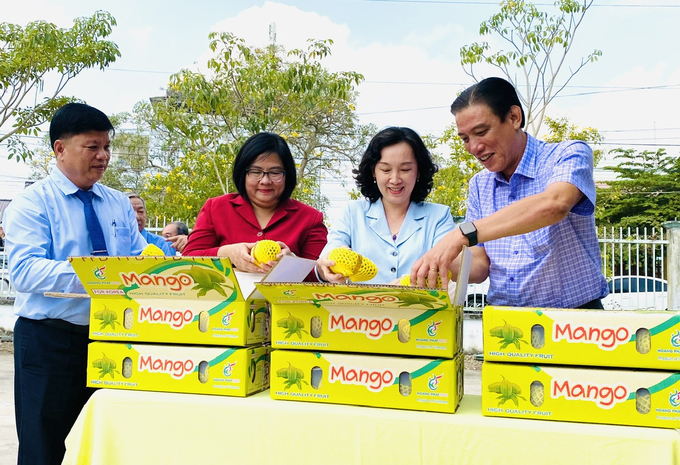
After more than 10 years of negotiation, An Giang's small-seeded mangoes, Takeo mangoes, and green-skinned mangoes have been officially exported to Australia, the United States, and South Korea. Photo: Le Hoang Vu.
Over 70% of the land area in An Giang, an agricultural province located at the headwaters of the Mekong River and sharing a border with Cambodia, is composed of alluvial soil. Consequently, the province's natural conditions provide a beneficial environment to foster agricultural development. The agricultural sector in An Giang province serves as both a foundation and a crucial support for the province's economic development. Notably, the province's agricultural sector achieved a growth rate of 4.43% in 2023, which is an increase of 2.07% compared to the same period in 2022. Accordingly, local crop production recorded a growth rate of 4.28%, significantly contributing to the province's GRDP growth rate.
Mr. Nguyen Si Lam, General Director of the An Giang province's Department of Agriculture and Rural Development reported: "An Giang currently leads the country in rice production and catfish farming. It is also one of the leading provinces in the Mekong Delta region in terms of vegetable and fruit production. Notably, mangoes have been designated as An Giang province's key economic crop. The province's transitional approach to this crop has contributed significantly to the growth of its agricultural sector."
According to Mr. Lam, An Giang province currently houses over 20,000 hectares of fruit tree production areas. Mango production areas account for nearly 13,000 hectares of the total area, with an annual yield of over 225 thousand tons. In addition to technical support aimed at increasing mango productivity and quality, the province prioritizes adding value to mango products through product branding and value chain integration.
Cho Moi district is the largest mango producing region within the province, with a total production area of 6,400 hectares, accounting for over 50% of the province's total mango production area. Mango production is primarily concentrated in the communes of Tan My, My Hiep, and Binh Phuoc Xuan. With the widespread adoption of scientific and technological advancements in production, and the adaptive cropping approach, Cho Moi district currently houses 704 hectares of VietGAP-compliant mango production areas, with 41 production unit codes covering nearly 6,200 hectares.
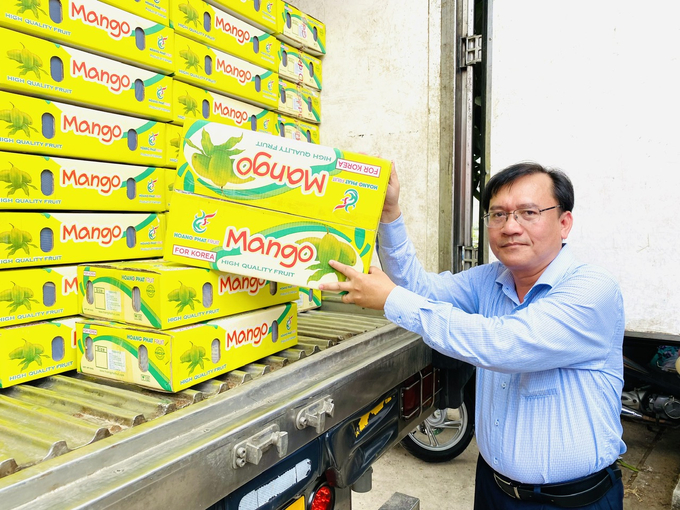
According to Chairman of the An Phu district-level People's Committee Trang Cong Cuong, the district will leverage the successful export of Takeo mangoes to strengthen support for local businesses and farmers, with the aim of establishing stable raw material areas and developing value chains. Photo: Le Hoang Vu.
Cho Moi's first shipment of green-skinned mangoes, totalling seven tons, was officially exported to Australia and the United States with the support of an export company. Additionally, Cho Moi exported its first batch of takeo mangoes, totaling 13 tons and certified with production unit codes, to South Korea in February 2024. The district is constantly receiving new mango export orders to various demanding markets, including China, the United States, South Korea, Australia, Japan, among others.
Mr. Cu Minh Trong, Chairman of the Cho Moi district-level People's Committee, shared: "Cho Moi district has designated agriculture as its main direction for development, and the foundation for local socio-economic development. Within the last few years, Cho Moi has made several breakthroughs in agricultural production, encouraged farmers and cooperatives to apply advanced scientific and technological methods in mango production, promoted production and consumption linkages between farmer organizations, cooperatives, and businesses."
"After recognizing the importance of production linkage and collective production in expanding market reach, farmers in Cho Moi district have proactively collaborated in the form of cooperatives. Subsequently, these cooperatives partnered with numerous domestic and foreign import-export companies to export mangoes to various markets including China, the United States, South Korea, and Australia. These export activities have enabled An Giang mangoes to conquer various demanding markets worldwide," affirmed Mr. Trong.
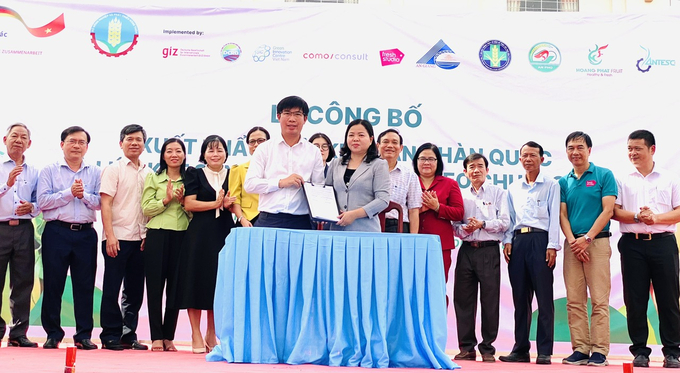
An Phu Mango Cooperative, located in An Phu district - An Giang province, signing agreements with mango export companies to continue exporting Takeo mangoes to various markets worldwide. Photo: Le Hoang Vu.
An Phu, the second largest mango producing region in An Giang province, is renowned for its delicious and high-quality Takeo mangoes, which have conquered demanding markets around the world. The district currently houses over 1,800 hectares of mango production areas, with a total annual yield of 30 thousand tons. Additionally, the district has 350 hectares of GlobalGAP-compliant takeo mango farms, with 61 production unit codes qualified for export.
Notably, An Phu district has successfully exported its first 18-ton shipment of Takeo mangoes to the South Korean market by late March 2024. This shipment represents An Giang's effort in introducing An Phu Takeo mangoes to the South Korean market, thereby enabling access to other demanding markets in Europe, the United States, Australia, and Japan.
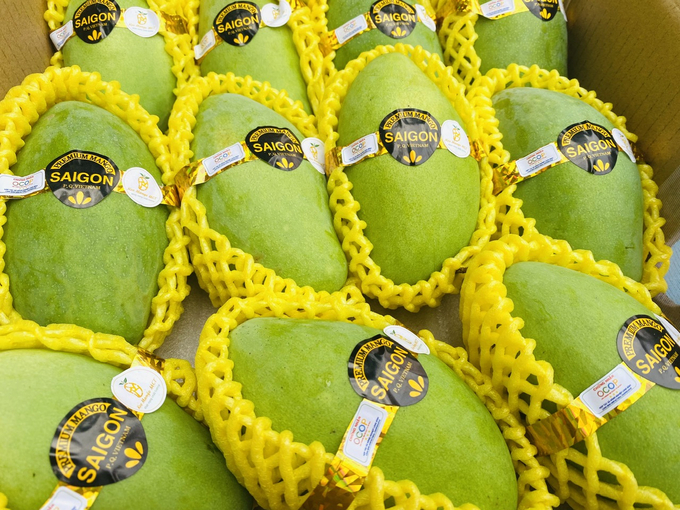
Mangoes have been designated as An Giang province's key economic crop. The province's transitional approach to this crop has contributed significantly to the growth of its agricultural sector. Photo: Le Hoang Vu.
Mr. Trang Cong Cuong, Chairman of the An Phu district-level People's Committee, stated: "To export An Phu mangoes to demanding markets such as South Korea, and conquer major markets such as Australia and the United States, it is crucial to maintain strict compliance with the requirements imposed by our partners regarding pesticide residue levels, pests, traceability, irradiation, and so on."
According to Chairman Trang Cong Cuong, the successful export of Takeo mangoes will prompt the district to strengthen its support for businesses and farmers in establishing stable raw material areas, and developing sustainable value chains. Furthermore, the district will expedite the issuance of production unit codes for pending mango production areas to increase export volume.
"In the immediate future, An Phu district-level People's Committee will continue to create a favorable environment and implement supportive policies for businesses, organizations, and individuals involved in mango production, processing, and trade. We will strengthen support for the establishment of stable raw material areas and the development of sustainable value chains; fully utilize existing production areas and expedite the issuance of production unit codes for pending areas to increase export volume. Furthermore, we will encourage fruit export companies to survey additional mango farms for export contracts," emphasized Mr. Trang Cong Cuong.

An Giang province currently houses over 20,000 hectares of fruit tree production areas. Mango production areas account for nearly 13,000 hectares of the total area, with an annual yield of over 225 thousand tons. Photo: Le Hoang Vu.
Ms. Nguyen Thi Minh Thuy, Vice Chairman of An Giang Provincial People's Committee, stated: "The export of An Giang mangoes to demanding markets such as the United States, Australia, and South Korea, is the result of the combined efforts from all levels of the Party committees, local governments, businesses, cooperatives and farmers. It was a 10-year process of constant negotiations and challenges."
With the aim of developing high-quality mango production areas for export, the An Giang Provincial People's Committee has encouraged local agricultural sectors to adopt scientific and technological advancements in mango production. Notable advancements include innovating mango production processes towards safety and meeting VietGAP, GlobalGAP standards; utilizing biological fertilizers and organic microorganisms; among others.
Additionally, the province will enhance the monitoring and supervision of pesticide residues on mangoes, establish production unit codes, etc. to ensure an adequate supply of high-quality and safe mangoes, featuring origin traceability. On the other hand, the province will establish production linkages with companies and export businesses to support the export of locally-produced mangoes.
Translated by Nguyen Hai Long
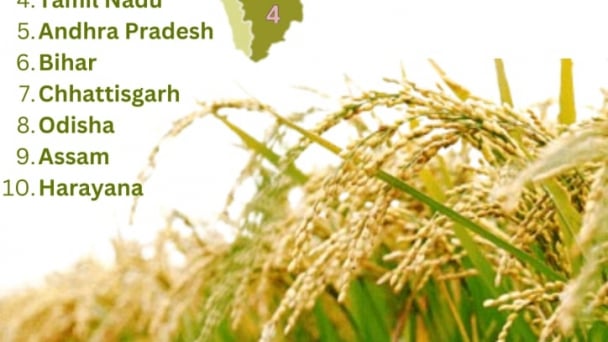
(VAN) Last week, the U.S. Department of Agriculture (USDA) released its June World Agricultural Supply and Demand Estimates (WASDE), raising projections for both Indian rice production and U.S. rice imports for the 2025/2026 marketing year.
/2025/06/17/2344-1-131758_261.jpg)
(VAN) Amid tariff risks and growing trade barriers in the U.S. market, Australia is emerging as a promising destination to sustain the growth momentum of Vietnam's shrimp exports.
/2025/06/17/2013-1-nongnghiep-112009.jpg)
(VAN) This notable growth trend reflects the global taste for fresh, nutritious fruits and the expanding use of lychees across various sectors.
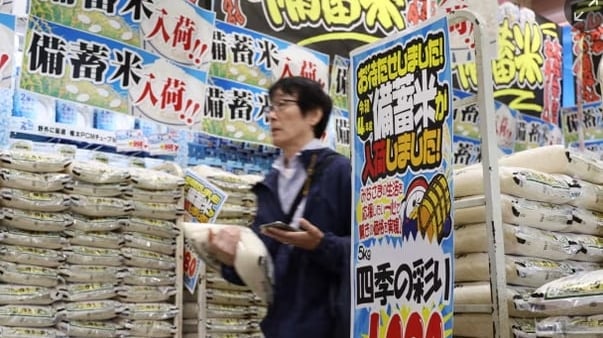
(VAN) The political and cultural insulation of Japan’s beloved grain is falling apart, and experts warn the country’s relationship with the staple will have to adapt.
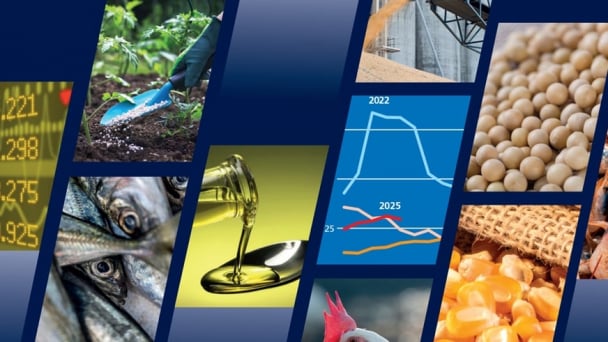
(VAN) Noting risks, report examines impacts of avian influenza, changing trade patterns since 2022, fish fraud, and shipping industry’s net-zero goals.
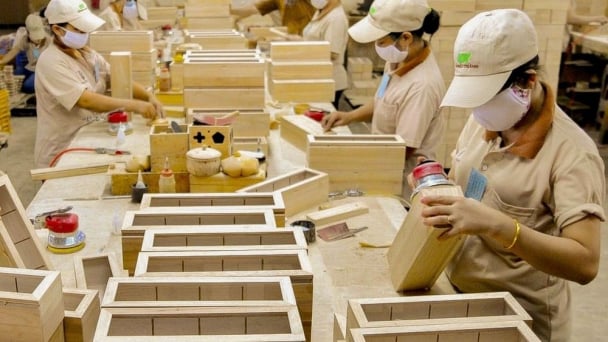
(VAN) Mr. Tran Quang Bao, General Director of the Forestry and Forest Protection Department, met and worked with the International Wood Products Association to promote cooperation in the field of timber trade.

(VAN) China's outbound shipments of rare earths in May jumped 23% on the month to their highest in a year, though Beijing's export curbs on some of the critical minerals halted some overseas sales.